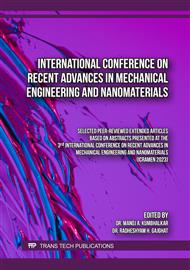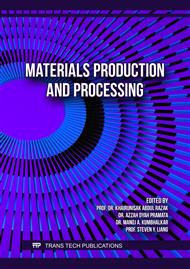p.3
p.21
p.29
p.35
p.45
p.51
p.59
p.69
Study the Effect of Fluxes on Weld Penetration during Activated TIG Welding of SS304
Abstract:
Stainless steel is widely employed in a variety of industries, including aerospace, chemical processing, and transportation. It can be recycled indefinitely with no loss of property. The Gas Tungsten Arc Welding (GTAW) or Tungsten Inert Gas (TIG) technique is widely used for connecting thin pieces of stainless-steel. However, it is ineffective for combining heavy parts in a single pass. Activated TIG (A-TIG) dramatically enhances weld penetration up to 1.5- 4 times in a single pass. A-TIG is the centre of investigation among researchers because of its deep penetrating capacity. This article discusses the effects of particular flux powders, such as NaF and Fe2O3, on surface appearance and geometric shape. Weld of satisfactory appearance is produced using NaF powder as a flux in TIG welding, whereas, Fe2O3 powder results in a substantial increase in both the joint-penetration and weld-aspect ratio.
Info:
Periodical:
Pages:
21-28
Citation:
Online since:
November 2023
Authors:
Price:
Сopyright:
© 2023 Trans Tech Publications Ltd. All Rights Reserved
Share:
Citation:



